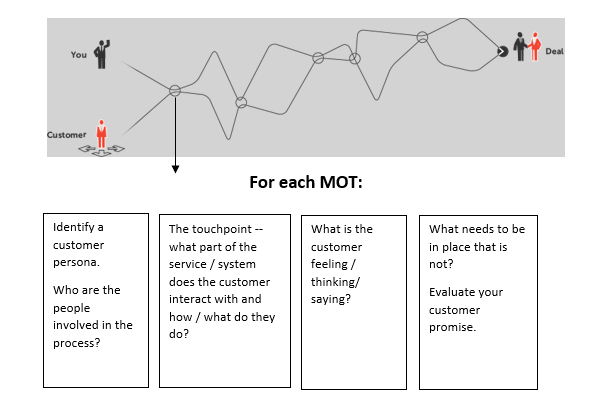![]()
No doubt your organization puts great emphasis on process improvement – reducing lead-times, increasing quality, eliminating cost – all to provide value for your customers, yet to be truly customer service focused, it’s also critical that you look at how your customers interact with your organization.
We’ve all been on the receiving end of poor customer service and despite how much we like a product or service, a poor customer service experience can taint our opinion of an organization and have us looking for another supplier. That’s because our level of satisfaction is directly related to the quality and reliability of the service we receive at each step of our customer journey.
Customer Journey Mapping:
Every interaction between your customer and your organization is a Moment of Truth (MOT); a moment in which you can wow your customer or disappoint them. Therefore, including Customer Journey Mapping in your improvement arsenal will serve you well. Customer Journey Mapping allows you to see your processes through your customers’ eyes by representing all the steps your customer goes through while interacting with your organization.

Creating a Customer Journey Map will provide insights into how your customers will feel at each stage in the journey so you can work to avoid potential pain points ahead of time. It allows you to think about all aspects – seen and unseen – that impact the customer experience. From that you can identify improvement opportunities, engage your teams in improving the process by making it visible using different process mapping methodologies, then work together to eliminate waste from the customers’ perspective. Your Customer Journey Map will also help you to design new user experiences.
Customer Journey Mapping Imperatives
- Represent the experience as your customers see it
- Don’t make assumptions…do your research!
- Create multiple personas to map
- Identify key motivators – tangible and emotional
- Understand your customers’ goals
- Evaluate your brand promises
- Keep mapping goals at hand:
- Make every customer interaction have purpose
- Let every customer point of contact add value
- Achieve a shared realized vision of service
